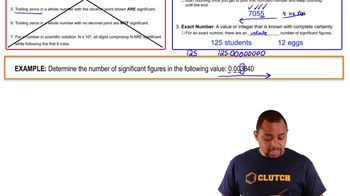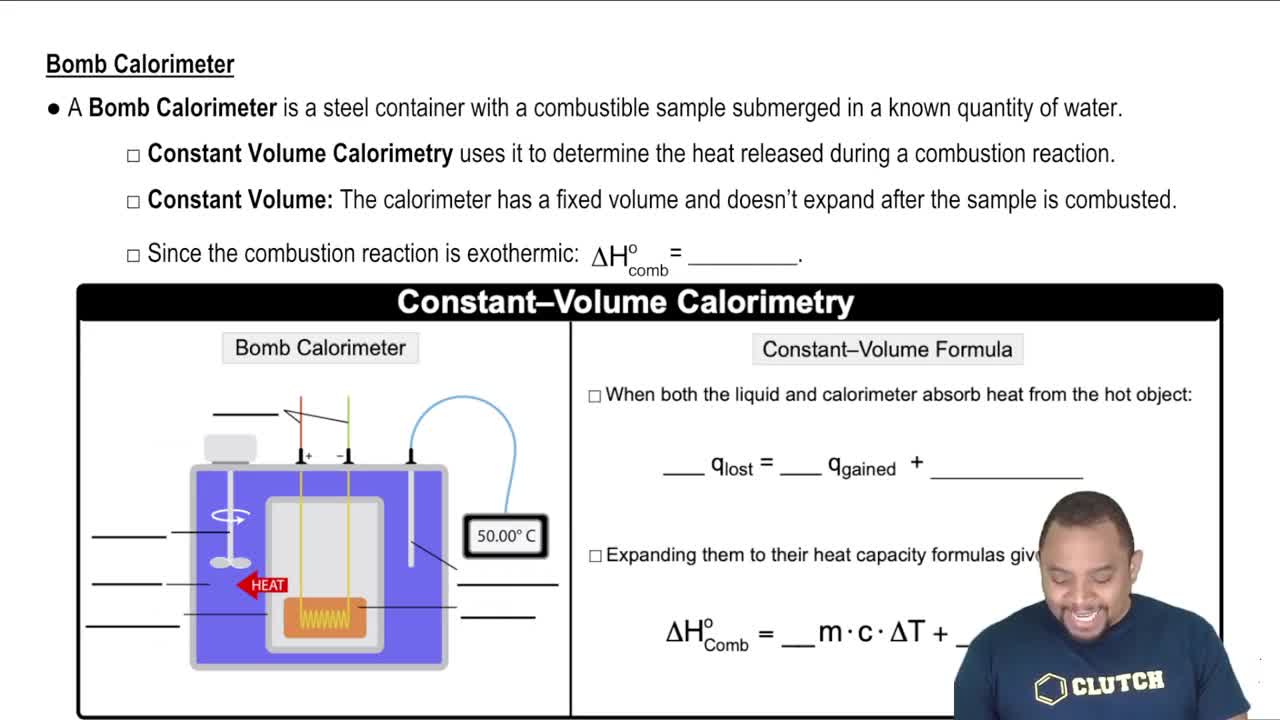Two spheres of equal volume are placed on the scales as shown. a. Which one is more dense?

The mass of an empty oil drum is listed as 2.0×104 g. After a quantity of biodiesel fuel is added to the drum, the total mass is 7.05×105 g.
a. To how many significant figures should the mass of the biodiesel in the drum be reported?
b. The density of the biodiesel fuel is 0.875 g/cm3. What is the volume of biodiesel that has been added to the drum, in L?
 Verified step by step guidance
Verified step by step guidance
Verified video answer for a similar problem:
Key Concepts
Significant Figures

Density

Volume Calculation

Water has a density of 0.997 g/cm3 at 25 °C; ice has a density of 0.917 g/cm3 at -10 °C. (a) If a soft-drink bottle whose volume is 1.50 L is completely filled with water and then frozen to -10 °C, what volume does the ice occupy? (b) Can the ice be contained within the bottle?
A 32.65-g sample of a solid is placed in a flask. Toluene, in which the solid is insoluble, is added to the flask so that the total volume of solid and liquid together is 50.00 mL. The solid and toluene together weigh 58.58 g. The density of toluene at the temperature of the experiment is 0.864 g/mL. What is the density of the solid?
Automobile batteries contain sulfuric acid, which is commonly referred to as “battery acid.” Calculate the number of grams of sulfuric acid in 1.00 gal of battery acid if the solution has a density of 1.28 g/mL and is 38.1% sulfuric acid by mass.
